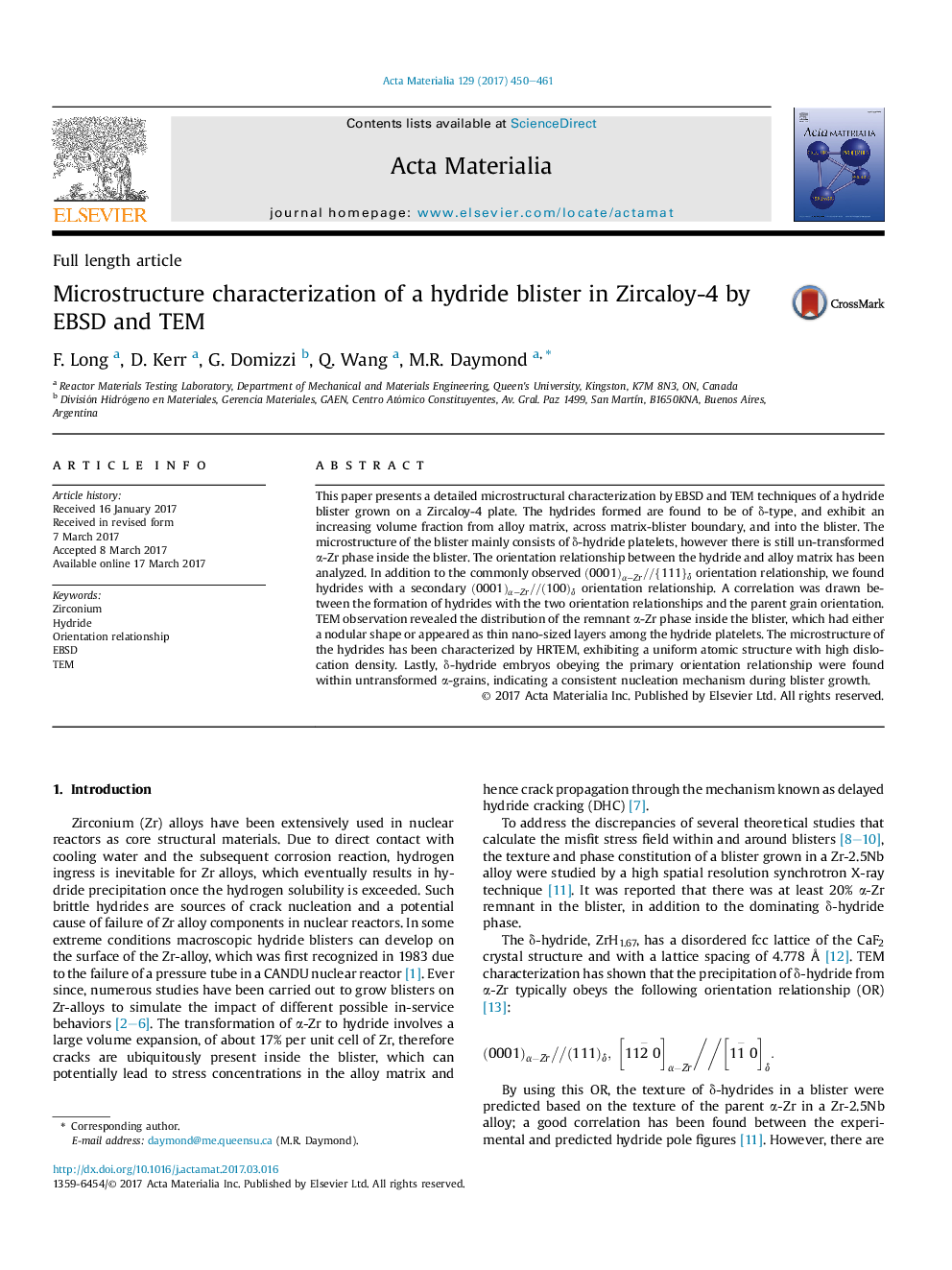| Article ID | Journal | Published Year | Pages | File Type |
|---|---|---|---|---|
| 5436241 | Acta Materialia | 2017 | 12 Pages |
This paper presents a detailed microstructural characterization by EBSD and TEM techniques of a hydride blister grown on a Zircaloy-4 plate. The hydrides formed are found to be of δ-type, and exhibit an increasing volume fraction from alloy matrix, across matrix-blister boundary, and into the blister. The microstructure of the blister mainly consists of δ-hydride platelets, however there is still un-transformed α-Zr phase inside the blister. The orientation relationship between the hydride and alloy matrix has been analyzed. In addition to the commonly observed (0001)αâZr//{111}δ orientation relationship, we found hydrides with a secondary (0001)αâZr//(100)δ orientation relationship. A correlation was drawn between the formation of hydrides with the two orientation relationships and the parent grain orientation. TEM observation revealed the distribution of the remnant α-Zr phase inside the blister, which had either a nodular shape or appeared as thin nano-sized layers among the hydride platelets. The microstructure of the hydrides has been characterized by HRTEM, exhibiting a uniform atomic structure with high dislocation density. Lastly, δ-hydride embryos obeying the primary orientation relationship were found within untransformed α-grains, indicating a consistent nucleation mechanism during blister growth.
Graphical abstractDownload high-res image (706KB)Download full-size image
